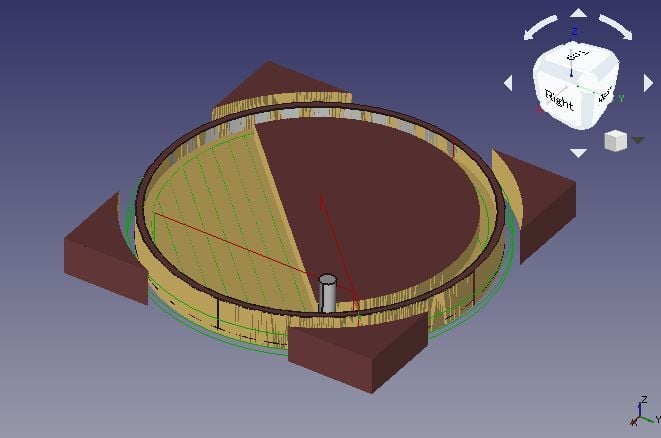
The landscape architecture profession in 2025 is a vibrant blend of design creativity, environmental stewardship, and technological innovation. With cities expanding and environmental concerns taking center stage, landscape architects are playing a key role in shaping healthier, more sustainable communities. From public parks to rooftop gardens and commercial campuses, their influence can be seen in diverse settings.
In the US, the average landscape architect salary varied from $56,000 to $93,000 as more people entered the profession in 2025. Emerging and experienced landscape architects should learn the necessary skills, regularly update their software skills, and present outstanding resumes and portfolios.
Why are Skills Important for Landscape Architects Today?
Today’s landscape architects must address environmental, societal, and technological issues. Nowadays, design work requires a combination of artistic, scientific, empathetic, and engineering abilities.
Clients and landscape architecture firms expect candidates to contribute to conceptualization, site planning, technical detailing, and sustainable design.
Because we see climate change, biodiversity loss and urban heat islands, it is necessary to use new tools and apply ecological thinking. Strong landscape architect skills allow experts to help on key projects and become flexible leaders in their jobs.
Which Skills Are Most In Demand in 2025?
The roles of landscape architects are adapting to city and nature issues, and the following abilities are now considered the most essential in 2025 among people working in this field:
1. Design and Creativity

-
Conceptualization
Produce creative designs that care for what the users expect, the site's state and the environment, and look attractive. For example, it requires you to sketch, build models and develop stories that reflect the specific place where the project is happening.
-
Aesthetic Sense
Understanding how space, color, texture, and form come together to shape the user experience. Professionals must create environments that are both visually striking and functionally intuitive across seasons and uses.
2. Technical and Analytical Skills

-
Software Proficiency
Working confidently with industry-standard tools to produce detailed plans, 3D renderings, and performance simulations. This includes not just drafting but also visualizing design impacts and communicating ideas clearly to teams.
-
Technical Knowledge
Having a deep understanding of site engineering principles, such as grading and drainage, to ensure that proposed spaces are practical, safe, and durable in real-world conditions.
-
Problem-Solving
Approaching on-site or planning challenges with logical thinking, creativity, and quick decision-making.
Also Read: Top 20 Landscape Design Firms in India & the US 2025
3. Communication and Collaboration

-
Client Relations
Taking in the project requirements and turning them into specific and workable strategies. Describing solutions in easy-to-understand language helps you grow in confidence and successfully partner with others for a longer time.
-
Teamwork
Taking part in teams of ecologists, engineers, and city officials while ensuring good results. Include every stakeholder in discussions to guarantee outcomes that cover the needs of all group members.
-
Presentations
Present concepts to people in ways they can easily relate to, using visuals, models, and stories. It is important to express the reason behind the design and emphasize its beauty without hesitation.
4. Project Management

-
Project Planning
Creating detailed road maps for timelines, resource allocation, and cost estimates. Keeping all parts moving smoothly requires attention to both the big picture and day-to-day tasks.
-
Coordination
Overseeing the actions needed for construction by teaming up with contractors and specialists. As a result, site problems are quickly solved, and the building is created according to the original plan.
Also Read: 12 Best Landscape Design Softwares in 2025
5. Sustainability and Ethics

-
Environmental Awareness
Innovative solutions that assist nature in reducing water flooding and the temperature in cities. Choosing local materials and plants can benefit the building in the future and keep its needs minimal.
-
Ethical Considerations
Show cultural humility when close to places of historical or spiritual significance. Ideas should incorporate new ideas and respect the past.
-
Sustainable Design
Making designs that protect the environment and sustain people's health over time. More companies are expected to manage material resources efficiently and lower carbon emissions.
Which Software Tools Should Landscape Architects Know?
To remain competitive in landscape architecture jobs, familiarity with industry-standard landscape software is crucial:
1. AutoCAD
Widely used for producing precise construction drawings, layout plans, and site documentation. It helps ensure that project details are clearly communicated to contractors and collaborators throughout the design and building process.
2. SketchUp & Rhino
SketchUp and Rhino make it possible for designers to design models in 3D, evaluate how models interact, and explore different design ideas fast.
3. GIS (ArcGIS, QGIS)
GIS reviews the site data, the land around it, land uses, and any related environmental factors. One can use these platforms to decide things wisely since they include hydrology maps, zoning, and vegetation.
4. Adobe Suite (Photoshop, Illustrator, InDesign)
Essential for producing polished visuals, concept diagrams, and professional portfolios. These tools help translate technical ideas into accessible, client-friendly presentations that leave a lasting impression.
5. Vectorworks Landmark
A specialized tool that integrates building information modeling (BIM) with plant databases, grading tools, and irrigation planning.
How Can You Showcase These Skills on a Resume or Portfolio?
A compelling resume and portfolio can distinguish you from other applicants, especially in competitive firms or when applying for international landscaping services positions.
Resume Tips
-
Landscape Architect Resume Objective: Put in the first section a focused phrase about your career and what you offer for the position. State how you are creative in solving problems or using sustainable design, as these qualities will impress the employer.
-
Key Skills Section: In the Key Skills part, include a great mix of skills you possess. Don’t forget about software skills you are familiar with, such as AutoCAD or GIS, and add communication with stakeholders or the ability to cooperate with other professionals.
-
Project Experience: For your experience, present the projects that best explain your capabilities. List your tasks, how big the project was, and how you made a difference, in particular through lower expenses, improved access, and care for the environment.
Use landscaping resume examples and entry level landscape architect resume templates to ensure professional formatting.
Portfolio Tips
-
Range of Work: Showcase a mix of project types and sizes from small residential gardens to large-scale urban developments. This demonstrates your versatility and ability to adapt your design thinking across different contexts and user needs.
-
Visual Clarity: Spend time obtaining clear and effective pictures that explain what you want to say. Use different drawings, such as plans, angles, initial sketches and diagrams.
-
Narrative Context: For each case, explain the main challenge, explain your role in the project, describe the main design strategy, and record the outcomes you achieved.
Conclusion
Landscape architects have an opportunity to make sustainable green spaces open to everyone and survive climate change. In 2025, the top skill for a landscape architects are being creative, knowing the environment, using advanced software tools, and communicating strategies that align with new project needs.
Leading architecture firms will highly regard people who excel in landscape architecture design and follow ethical judgment. Demonstrating your skills will be useful whether you are just starting or hoping to progress further in your career. With the help of our resource page at Novatr, professionals have access to select training and advice about the latest industry updates and trends.
Anyone hoping to excel in the BIM Course for Architects, used more in landscaping service and architecture, can find helpful courses at Novatr.
Was this content helpful to you



.jpg)




.png)


